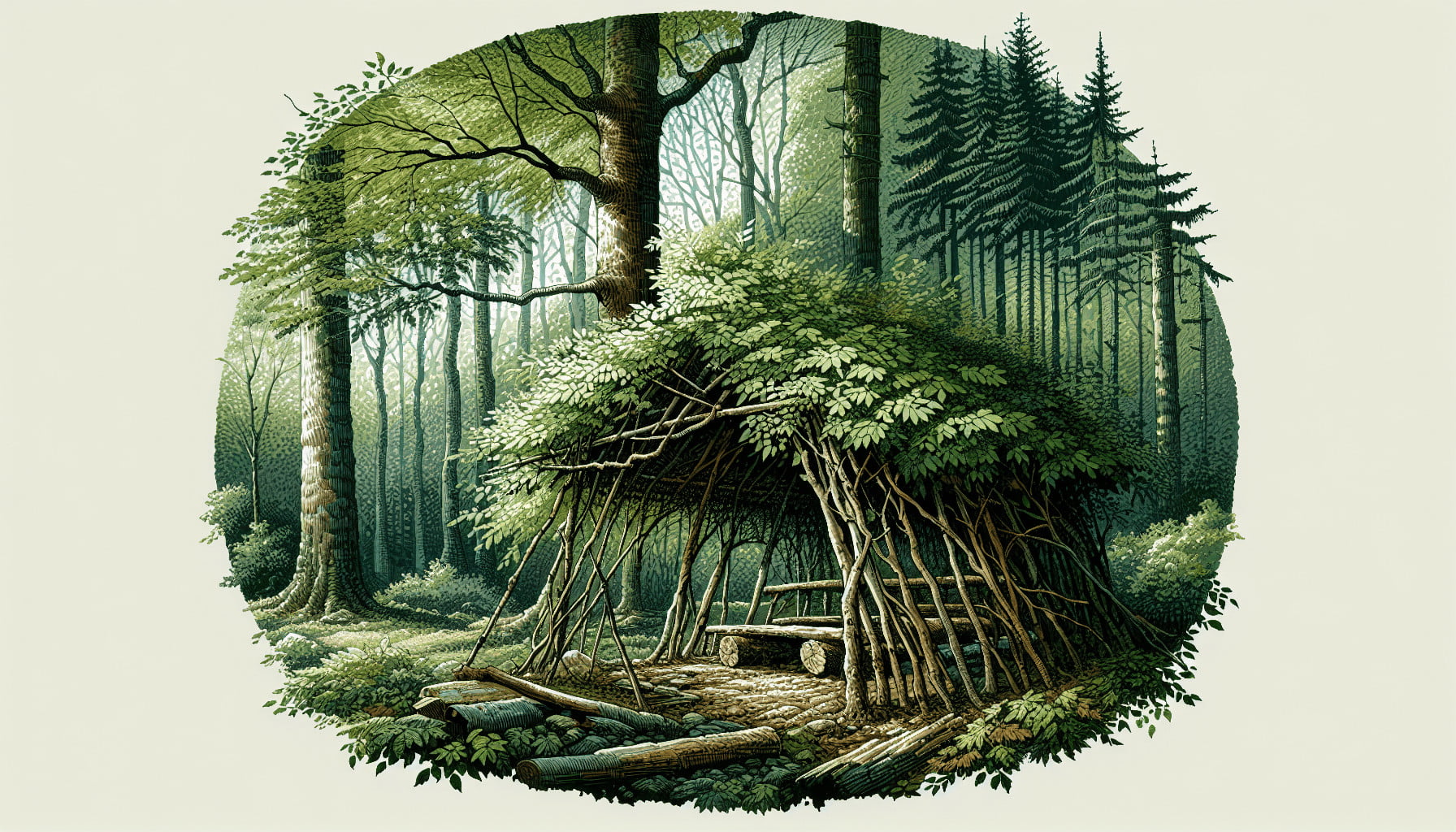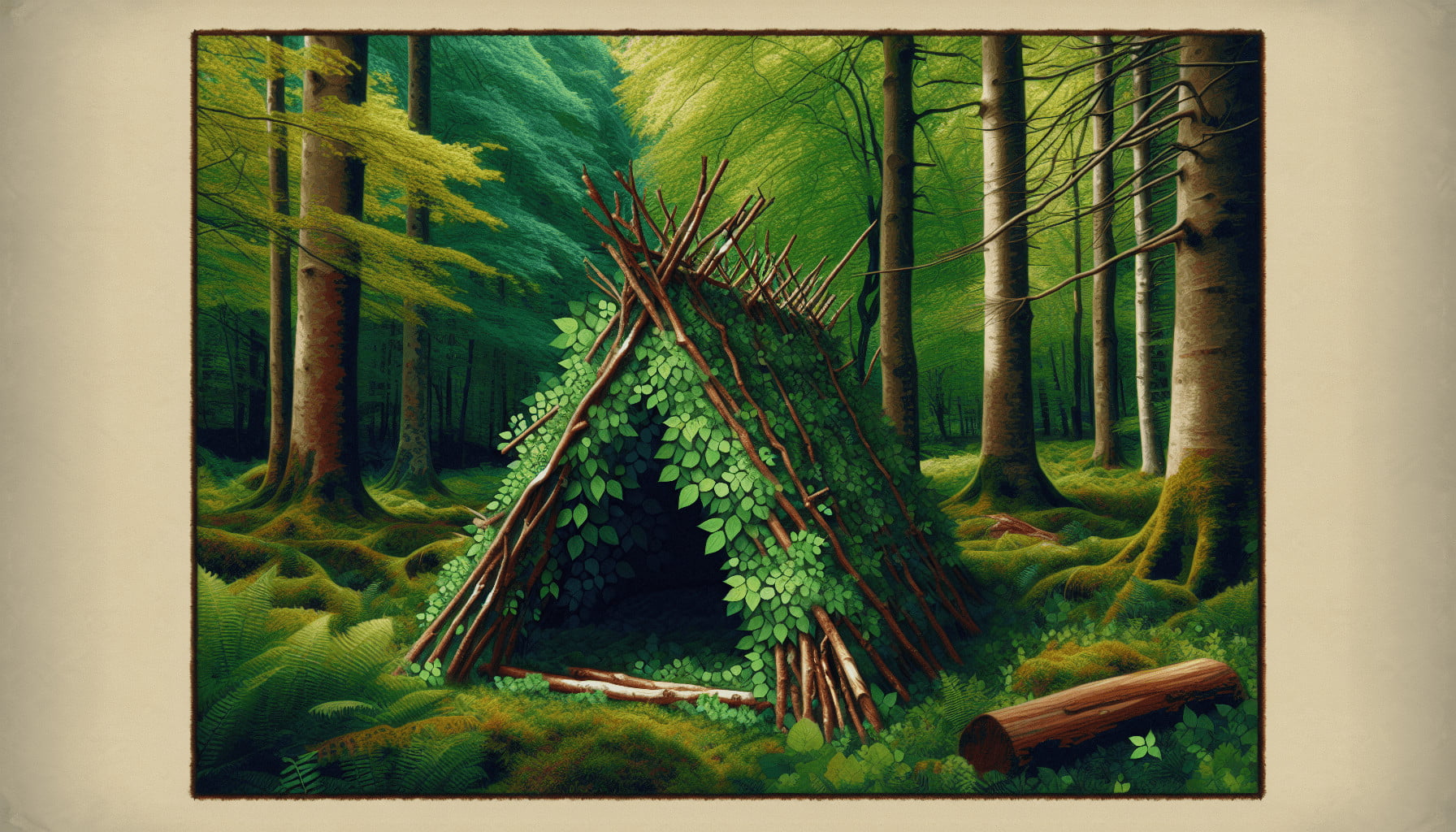Hey there, adventurer! Ready to tap into your wilderness survival skills? In the article “Different Types Of Natural Shelters To Build,” you’ll uncover some of the most practical and ingenious ways to create shelter using only the resources Mother Nature provides. Whether you’re planning a weekend camping trip or just want to be prepared for an unexpected situation, this guide will walk you through various types of natural shelters, their benefits, and step-by-step instructions to construct them. Get ready to harness your inner outdoorsman and make the most of the natural world around you!
Different Types of Natural Shelters to Build
Have you ever found yourself in the middle of nature and wondered how you’d survive with just the wilderness around you? Whether you’re an avid camper, a survival enthusiast, or just curious about outdoor living, knowing how to build natural shelters can be a lifesaver—literally.

Why Build Natural Shelters?
Before diving into the various types of natural shelters, let’s talk about why you might need one. First and foremost, natural shelters offer protection from the elements, whether it’s wind, rain, snow, or extreme heat. Additionally, they can provide a sense of security and warmth, especially when you’re out in the wild. And let’s not forget—they can be a fun and rewarding project, helping you connect with nature in a practical way.
Essential Factors to Consider
When constructing a natural shelter, several factors can make or break your efforts.
- Location: Choose a spot that’s safe from falling branches, flooding, and predators.
- Materials: Look for abundant resources like leaves, branches, and rocks.
- Tools: Ensure that you have basic tools like a knife or hatchet, though some shelters can be built with your bare hands.
- Time: Some shelters can be built quickly, while others might take several hours or even days.
By keeping these factors in mind, you’ll be better prepared to create a shelter that suits your needs.
Types of Natural Shelters
Now that you know why natural shelters are crucial, let’s dive into the different types you can build. Each type has its pros and cons, and the best shelter for you will depend on your situation and environment.
1. Lean-To Shelter
The Lean-To Shelter is one of the simplest and quickest shelters you can build.
How to Build a Lean-To Shelter
- Find a Ridgepole: This is a long and sturdy branch that will serve as the main support.
- Prop Up the Ridgepole: Use two shorter branches to support the ridgepole at an angle, making sure it’s stable.
- Add Framework: Place additional branches at an angle against the ridgepole to serve as the frame.
- Cover the Frame: Layer leaves, branches, and other debris to insulate the structure.
| Pros | Cons |
|---|---|
| Quick to build | Limited protection from the elements |
| Requires minimal materials | Not very spacious |
2. A-Frame Shelter
The A-Frame Shelter is another straightforward structure that offers more protection against the elements compared to the Lean-To Shelter.
How to Build an A-Frame Shelter
- Find Two Trees: Ideally, they should be about 6-8 feet apart.
- Install a Ridgepole: Secure a long and sturdy branch between the two trees.
- Create a Frame: Lean smaller branches against both sides of the ridgepole to form an “A” shape.
- Insulate: Cover the frame with leaves, branches, and debris.
| Pros | Cons | | More protection than Lean-To | Requires more materials | | Good insulation | Takes longer to build |
3. Debris Hut
For colder weather or areas with lots of natural debris, the Debris Hut is an excellent choice.
How to Build a Debris Hut
- Find a Ridgepole: This should be taller than you.
- Create a Tripod: Use smaller branches to form a tripod, and prop up the ridgepole on it.
- Add Ribs: Attach more branches to create a ribbing effect down the length of the ridgepole.
- Add Debris: Cover the entire structure with leaves and debris for insulation.
| Pros | Cons | | Excellent insulation | Time-consuming to build | | Good for cold climates | Requires a lot of debris |
4. Tarp Shelter
If you have a tarp or poncho, you can create a versatile and quick shelter.
How to Build a Tarp Shelter
- Find Anchors: Locate two trees or rocks to tie your tarp between.
- Tie Down: Secure the tarp in a triangular or rectangular shape.
- Add Stakes: Use branches or stakes to secure the sides of the tarp to the ground.
- Adjust: Fine-tune for better stability and coverage.
| Pros | Cons | | Easy and quick to set up | Requires additional equipment | | Versatile | Limited insulation |
5. Snow Cave
In snowy conditions, a Snow Cave can provide warmth and safety.
How to Build a Snow Cave
- Find a Snow Drift: Look for a large, deep drift of snow.
- Dig an Entrance: Carve out a tunnel leading up to a circular room.
- Hollow Out: Carefully hollow out the interior, keeping the walls and ceiling thick.
- Ventilation: Make a small hole in the roof for ventilation.
| Pros | Cons | | Good insulation from cold | Requires deep snow | | Safe from wind and predators | Time-consuming to build |
6. Rock Shelter
If you find yourself in an area with large rocks or boulders, you can take advantage of natural formations to build a Rock Shelter.
How to Build a Rock Shelter
- Locate Rocks: Find large rocks that form a natural overhang or cave.
- Clear the Ground: Remove any sharp objects or debris.
- Add Insulation: Use branches, leaves, or even your backpack as insulation.
| Pros | Cons | | Utilizes natural formations | Limited availability | | Quick to set up | Less control over structure |
7. Tree Pit Shelter
In snowy environments, a Tree Pit Shelter can offer both protection and warmth.
How to Build a Tree Pit Shelter
- Find a Tree: Look for a large tree with low-hanging branches.
- Clear Snow: Dig a pit in the snow around the base of the tree.
- Insulate: Use branches, needles, and other debris to cover the pit.
| Pros | Cons | | Good for snowy environments | Requires snow | | Provides windbreak | Limited space |
Tips for Building Natural Shelters
Planning Your Shelter
Planning your shelter is just as crucial as the actual building.
- Survey the Area: Ensure that you’re not in a flood-prone zone.
- Evaluate Resources: Make sure you have enough natural materials.
- Check for Hazards: Be mindful of potential dangers such as falling branches or wildlife.
Making Your Shelter Comfortable
Once your shelter is built, there are a few things you can do to make it more comfortable.
- Ground Insulation: Use leaves or grass as bedding to insulate yourself from the cold ground.
- Fire Pit: If conditions allow, build a small fire pit near the entrance for warmth.
- Waterproofing: Add an extra layer of branches or a tarp to keep water out.
Safety Precautions
Your safety is paramount when building and staying in natural shelters.
- Avoid Dead Trees: Make sure your shelter is not near dead trees or branches that could fall.
- Ventilation: Always have appropriate ventilation to avoid suffocation.
- Keep Dry: Staying dry is crucial for maintaining body heat and overall health.
Conclusion
Building a natural shelter can be both a fun and useful skill. From the simplicity of a Lean-To Shelter to the more complex Snow Cave, knowing how to create these structures can provide security and comfort in the great outdoors. So next time you venture into the wild, you’ll be well-prepared to tackle whatever nature throws your way.
Whether you’re out on an adventurous hike, enjoying a weekend camping trip, or even finding yourself in a survival situation, remember that your environment offers the materials you need for shelter. With a bit of knowledge and creativity, you can build a safe, comfortable shelter that meets your needs and keeps you protected. Happy building and stay safe out there!

